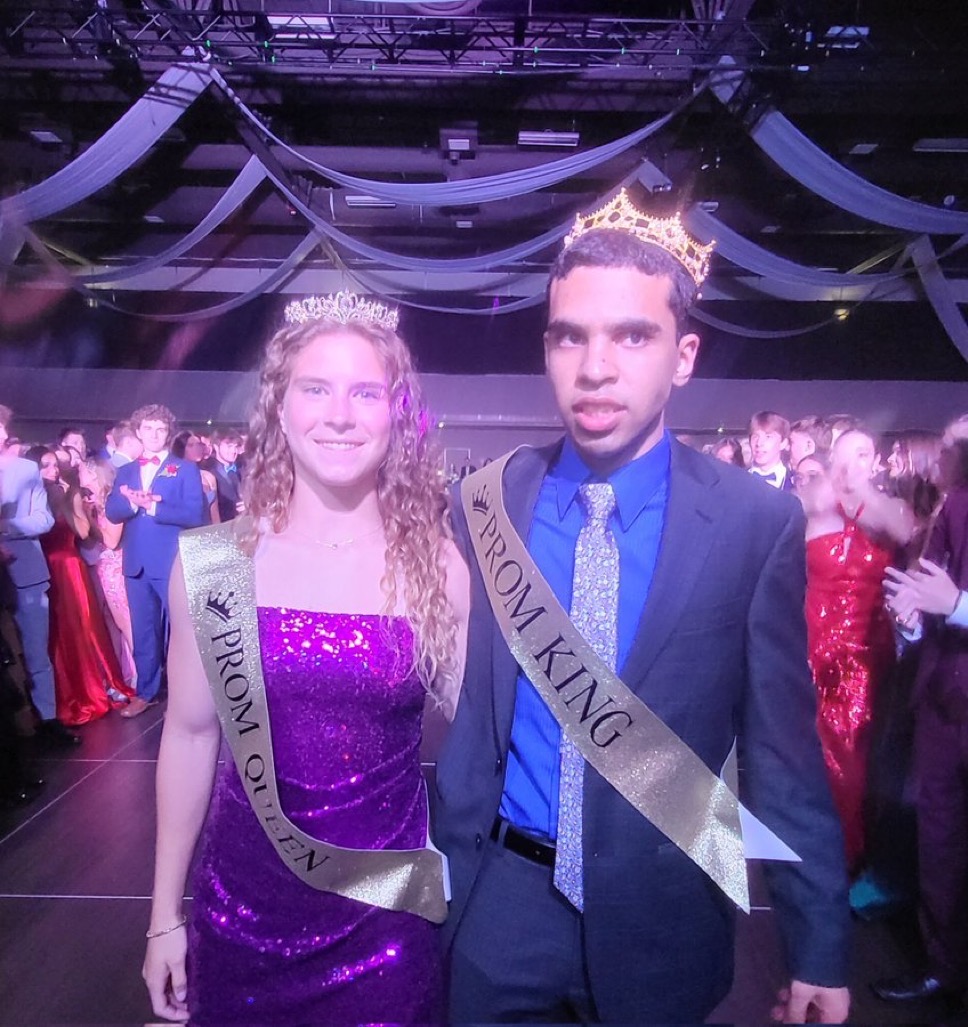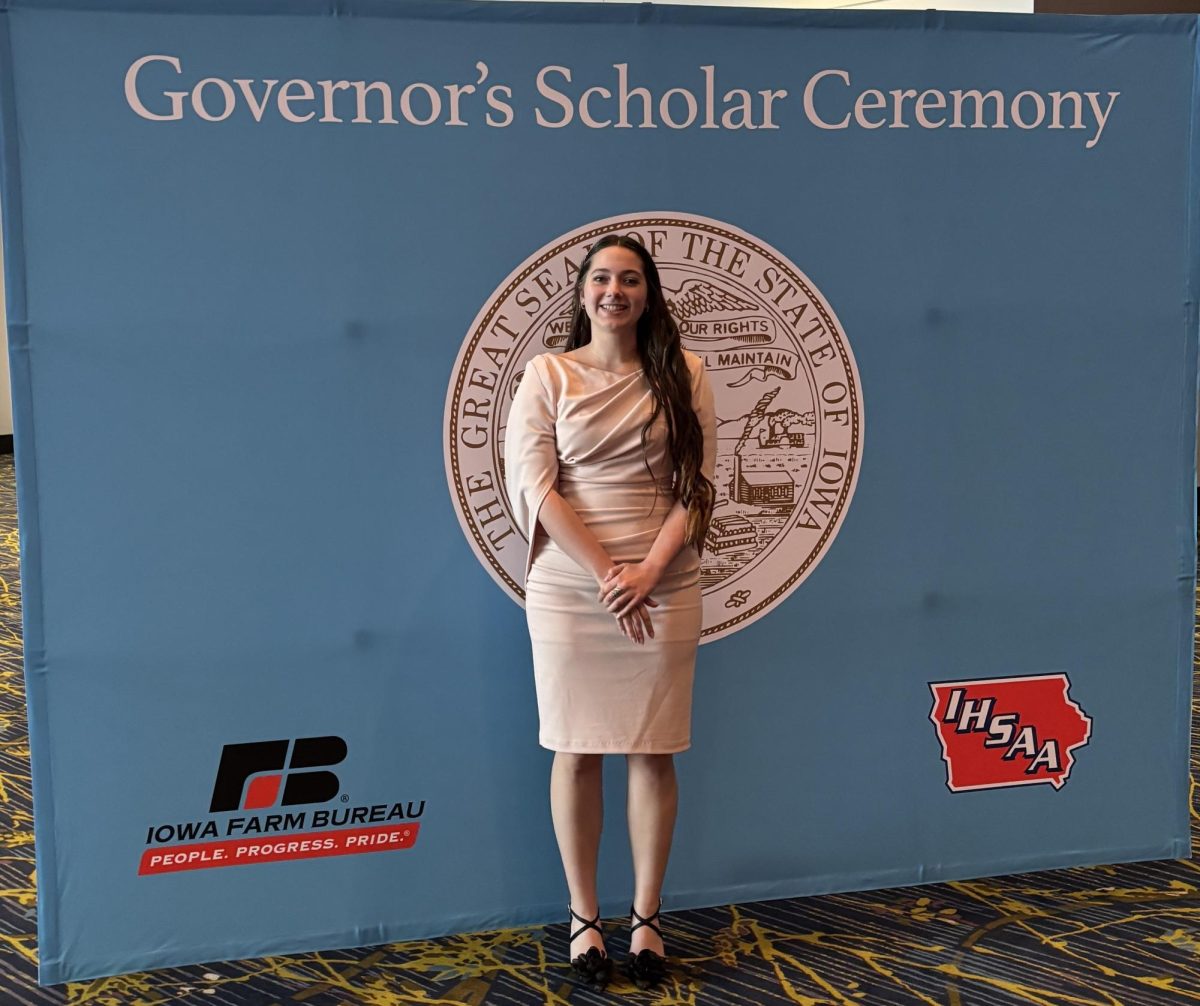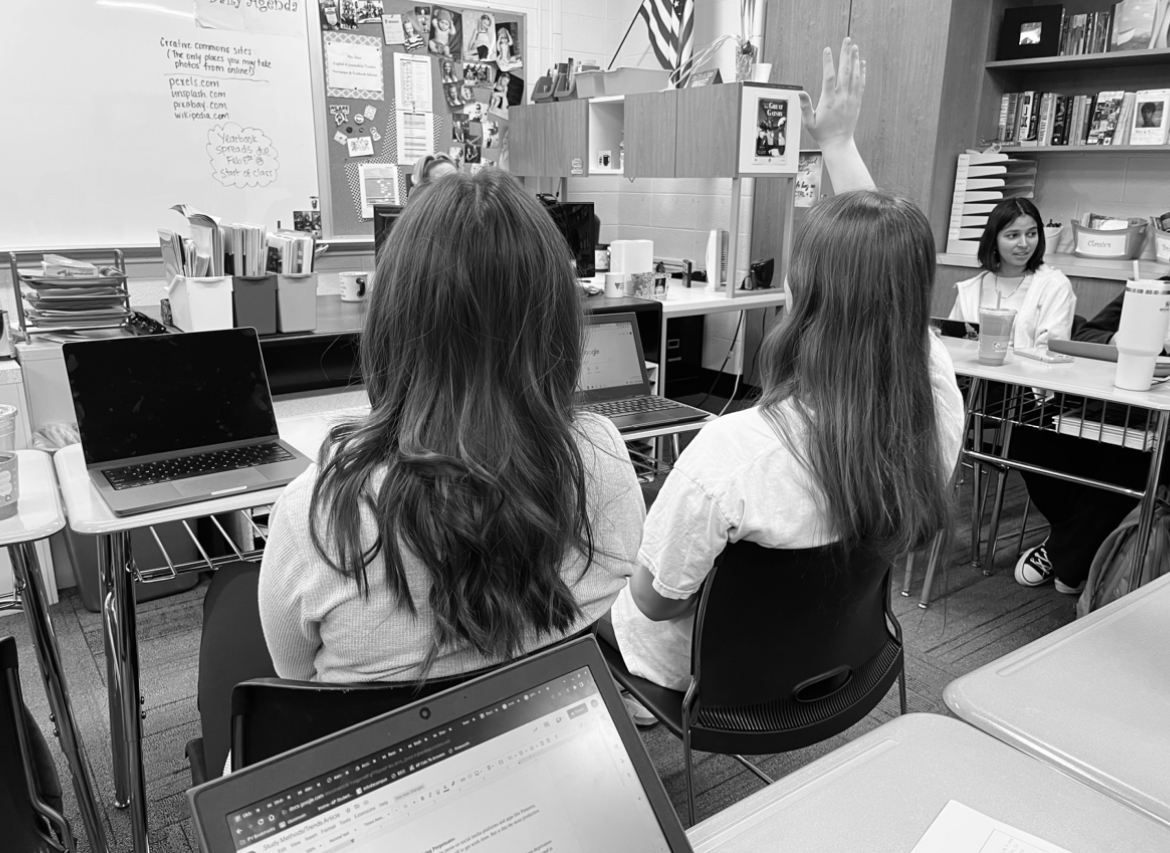
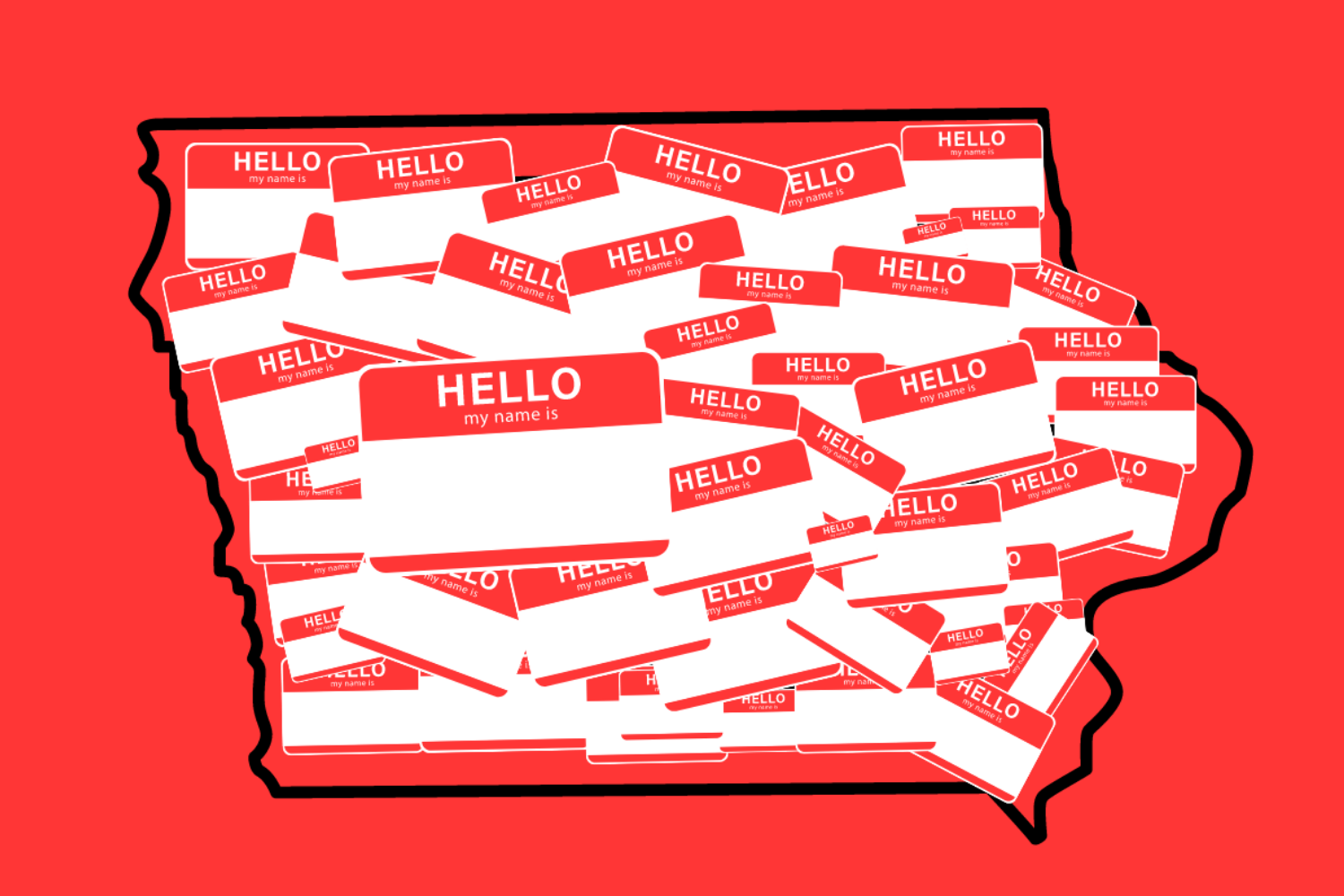
On the surface, J is a bright and bubbly teenager. They bring an exuberant energy everywhere they go, and speak with levels of passion remarkable for someone of their young age. But J has a secret, and the state of Iowa wants to expose it.
“J” isn’t a name, but a pseudonym for a nonbinary high school student who chooses to remain anonymous. With friends, J uses a mix of all pronouns and a name different from the one their parents gave them.
Their family has no idea.
Under Iowa’s most recent law, Senate File 496, educators are required to tell a student’s guardian if they request to be called by a name or pronouns different from those listed in Infinite Campus.
For J, and many other students like them, this law presents a dilemma. If J uses the name they prefer at school, their parents will be notified, creating disaster for their home life. So they choose the lesser evil, using their given name and pronouns despite the discomfort of constant misgendering.
“[It hurts] every time someone uses my given name, and it’s even worse when I have to use it… I mean, I have to sign my given name and I have to say it out loud. And it’s just like, there is physical pain in my body whenever I have to hear it,” J said.
Because Pleasant Valley is a public school, the district is forced to comply with state regulations and laws. This means that even teachers who support trans and non-binary students must report them or risk losing their teaching licenses.
Psychology teacher Ann Berger isn’t afraid for her own job. “I don’t live in fear. I don’t teach from a place of fear. I don’t guide my life and my choices on fear… I think we need to understand that teachers are not the enemy here,” said Berger.
As a psychology teacher, Berger’s worries surround students’ mental health more than anything. “This is very concerning to me that we are not able to treat [LGBTQ+ students] with respect, with kindness, with care. Especially knowing these statistics on brain and mental health. They’re at risk.”
For students who are supported by their families, there is an additional process required to officially give teachers permission to call them by a different name.
Danielle Harrell’s son, Jada Shepherd, recently changed his pronouns, so Harrell experienced these new regulations firsthand. It took around a week and a half in total for all of Shepherd’s teachers to use the correct pronouns for him.
Harrell believes that conversations about students’ gender identity ultimately come down to parents respecting their children’s self-discovery. “Jada knows Jada’s soul better than anyone on this earth. I don’t know Jada better than Jada knows himself,” she explained.
Iowa’s law is simply the state’s response to the national battle over parents’ rights, which has been waged over how race, sexual identity and gender are taught in schools.
Other laws, which similarly focus on trans and nonbinary students, have been passed in states across the country. Florida’s infamous ‘Don’t Say Gay’ bill was passed in March of 2022, and several states have followed suit.
Supporters of the parents’ rights movement and recent laws claim that parents should have the ultimate authority over what, when, and how their children are taught. The laws stem from the modern belief that schools are keeping secrets and withholding information from parents about their own kids.
Another goal of SF 496 is to protect students’ mental health, especially LGBTQ+ youth, who have historically higher rates of mental illness than their peers. By alerting the guardians of these students, legislators hope they will receive the support they need.
Harrell sees it as doing the opposite for mental wellness. “The emotional needs of a child have so much to do with their gender identity being respected,” she countered.
J agrees. They have had diagnosed depression since middle school, and said they felt an improvement in this when they came out to their peers. Now, they fear their past struggles will return.
The state of education in Iowa— and America— is precarious. Teachers are leaving the profession, students are losing trust with the school system and new laws continue to be passed, disrupting the status quo.
As legislation is reviewed and implemented, Iowans have nothing to do but wait for impacts. J understands this feeling as well as anyone: “I feel like I’m walking on eggshells.”
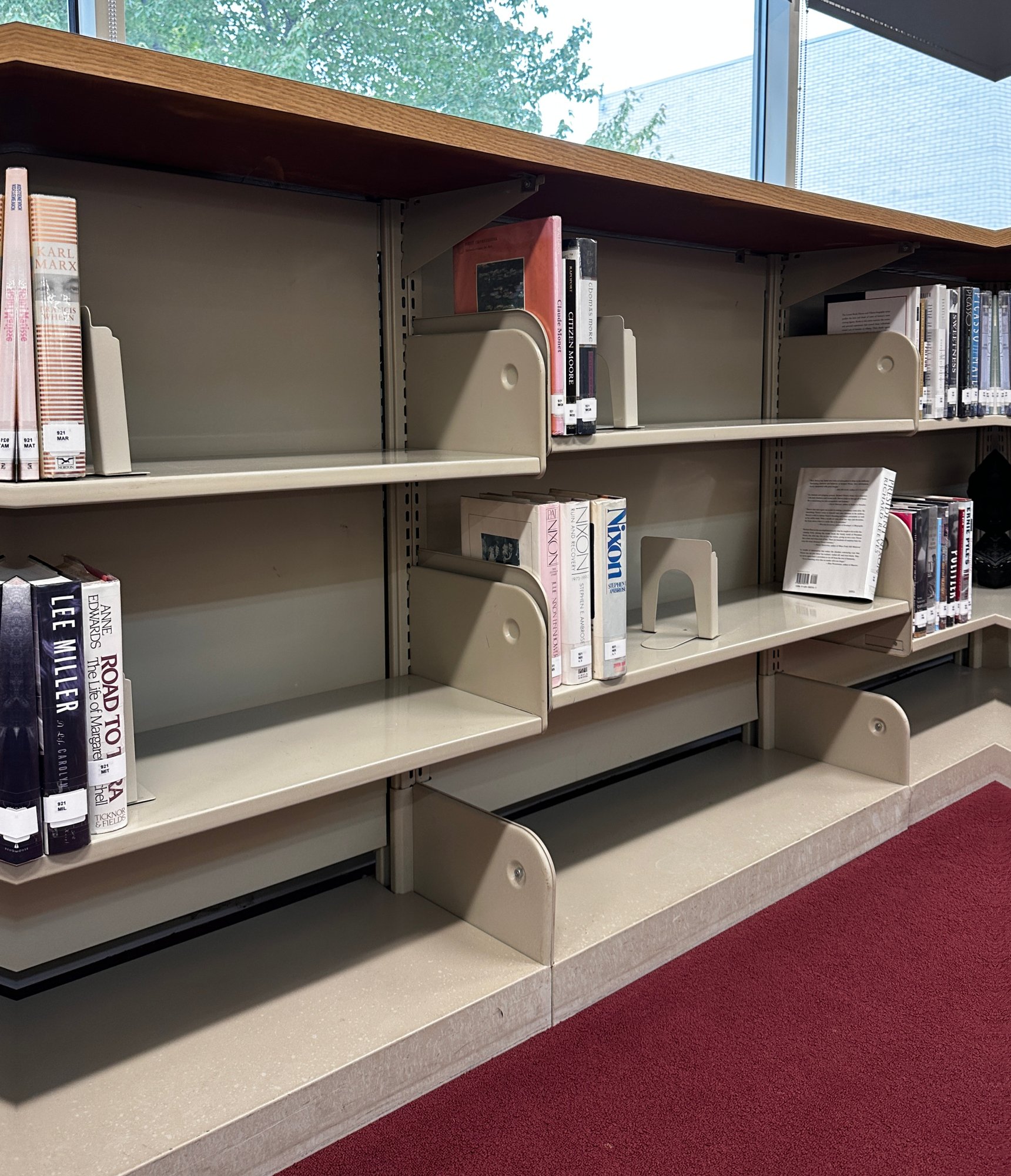
Iowa Governor Kim Reynolds signed a new law into effect, namely Senate File 496 on May 26, 2023. A key inclusion of this new law is the mass book ban swiping books off of library shelves across the state.
The book ban, only a portion of this expansive new law, details restrictions on all works of literature with depictions or descriptions of sex, including mentions of nudity and other implications of various sexual activities. This law is effective for grade levels K-12 across the state.
The details of this new law describe the context in which sexual implications are problematic, as well as certain literary exemptions to the ban’s conditions. The law also includes prohibitive measures to ensure its proper execution, including punishments for administrators that disobey its requirements.
Since going into effect July 1, the bill has garnered mixed reactions among teachers, administrators and parents, as well as critics on both sides of the political aisle. The bill’s seemingly arbitrary stipulations open up the possibility of a larger-than intended ban.
Certain arbitrary exemptions included in the bill have raised concerns over its true intentions, and its lack of clarity leaves questions lingering regarding how to go about in the law’s application. Many debate over the necessity of this law, particularly in high schools, where mature content is an integral part of numerous classes’ curricula.
One topic of debate lies within the law’s description. Iowa senators explicitly rejected the notion that sexual implications need to be graphic in order to be subject to a ban, thus generalizing the requirements for a book’s removal. SF 496 simply states that all books including implications, no matter how brief, of sexual acts are not appropriate for students, and are therefore subject to removal.
So much as a reference to nudity or minor sexual acts will now constitute a ban of the book entirely. This broad ban will force hundreds of books off of shelves, despite most of which revolving around non-sexual themes.
Books like “The Color Purple” by Alice Walker, “A Farewell to Arms” by Ernest Hemingway, “Sophie’s Choice” by William Styron and “1984” by George Orwell, despite all having non-explicit storylines, will be banned in compliance with the law.
Another troubling detail of SF 496 is that sexually explicit content defined by this law includes all depictions or mentions of sexual assault. Powerful stories with topics of sexual assault will now be banned from libraries, classrooms, and curricula.
“To Kill a Mockingbird” by Harper Lee is an integral part of the English curriculum at high schools across the United States, and is taught in a majority of high school English courses. The book touches on a variety of topics including racism, southern culture and morality, and a subplot within the book involves a trial over a rape accusation.
The description of the alleged rape in the book goes no further than the word itself, yet it is enough to ban the book from classrooms across Iowa altogether. What was intended to be a thought-provoking, reflective story about how communities and cultures can function in unity and division is reduced to just another explicit book unfit for high school students, as determined by the new law. A key lesson in literature and history, erased from classrooms at the mention of one singular word.
Bridgette Exmen, a former English teacher in Mason City, Iowa commented on the generalization of two vastly different topics. “We’ve been compelled to lump together childhood sexual assault and sexual violence with pornography and remove Maya Angelou’s ‘I Know Why the Caged Bird Sings’ and Margaret Atwood’s ‘The Handmaid’s Tale.’”
And this is the basis of many of the arguments over disputed books. Ones with the briefest explicit content are subject to removal, despite all else that they may offer. Observers of the new law consider the possibility that legislators are simply taking the wrong messages from these books, and misconstruing their intentions to begin with.
This law not only intends to remove explicit content from schools, but directly from curriculums. AP Language and Composition is a course offered at schools across the state, and numerous books within its curriculum are subject to the ban.
AP Language and Composition teacher Dr. Lynne Lundberg is one of many teachers expected to alter their curriculum to comply with the new law. “It is one of many examples of an unfunded law. Who is paying the librarian who now has to sort through hundreds of books in compliance with the law? Who is paying the teachers who now have to completely rework their class curriculum?” The law evidently comes with unintended expectations, considering teachers and librarians will be forced to accommodate the law without additional compensation.
In addition, Lundberg addresses the necessity, or, lack thereof, of the new law. “AP Lang is meant to be a college level class. There is no content in this class written for a teen audience.” She explains, “That being said, the perfect place to deal with these mature and complex concepts is a formal, academic environment, yet it will be the one place it is not allowed. The law is simply overprotective. If a book has never offended anyone, it probably doesn’t have a lot to say.”
Another topic of discussion relevant to the new law is its necessity – is this mass-filtration of literature in high schools necessary? Many argue that high school students need not be shielded from ‘sexually-explicit’ books, despite the minimum offense for such a label being as minimal as kissing in some cases. It is in question amongst critics whether or not such displays are corruptive for high school students, and if it is possible that this law will ultimately do more harm than good.
Senior Muhan Basnet comments on the forthcoming ban on books within PV’s library and libraries across the state. “I don’t think it’s necessary that these books are banned. High school students are mature enough to read ‘explicit’ scenes in books and be able to extract the intentions behind them.” She adds, “I think it’s a student’s right to determine what kind of books he or she is comfortable reading, and the books that are part of the curriculum at school are not inappropriate enough to be worth banning.”
A third, widespread conflict pertaining to the law is that of diversity within banned literature. Statistics from CNN show that roughly a third of the titles at risk to be banned focus on topics such as racism or include main characters of color, and approximately 26% of the titles have LGBTQ+ themes and characters.
But despite the widespread banning of books, worthy or not, there remain a small number of exceptions. Religious texts, such as the Bible, remain in school libraries despite the ban. In fact, legislators made an explicit exemption for religious texts, though they evidently involve often vulgar sexual references. Moreover, stories like Romeo and Juliet remain in classrooms, despite its equally vulgar sexual content.
Banning a disproportionate number of LGBTQ+ stories, African American biographies and the like, yet maintaining that exceptions be held for religious texts and Shakespeare only adds to the ambiguity of the law. Moreover, this ambiguity applies beyond just the ban’s implementation.
The law’s phrasing includes rather ambiguous insinuations of potential punishments for school administrations that fail to administer the ban adequately. A report from PEN America describes a rather intimidating clause in the bill. “Vague language in the laws regarding how they should be implemented, as well as the inclusion of potential punishments for educators who violate them, have combined to yield a chilling effect.”
The biggest threat this law presents is its lack of clarity. When a law is written without clear, distinguished rules and protocols as to how it is to be enforced, it leaves room for misinterpretation. Schools are expected to implement the law’s stipulations, yet if the law is written with little clarity to begin with, as well as having seemingly arbitrary exceptions, how are schools expected to comply? And moreover, if teachers are found to be defying the law, they are subject to face consequences, including fines and even termination at a second offense.
The book ban presents a threat to high schools across the state by dictating the kinds of books available for students to read. Students will be deprived of various classic and significant stories entrenched in historical lessons, soon to be eradicated from libraries and classrooms. The law will monopolize what kinds of books students can read, and therefore what kind of information they can obtain.
Students and teachers alike will feel the consequences of the implementation of this law. Lundberg gave a final word on the matter:.“Literature is not merely reading comprehension practice; rather, great literature gives us the opportunity to understand and explore the lives of people unlike us and situations we have not yet faced. By reading great literature, we develop empathy and critical thinking, vital skills for a life well lived.”
SF 496 went into technical effect July 1 meaning books will be removed from classrooms across the state, though administrators will not be penalized for using banned books in the classroom until Jan 1, 2024.
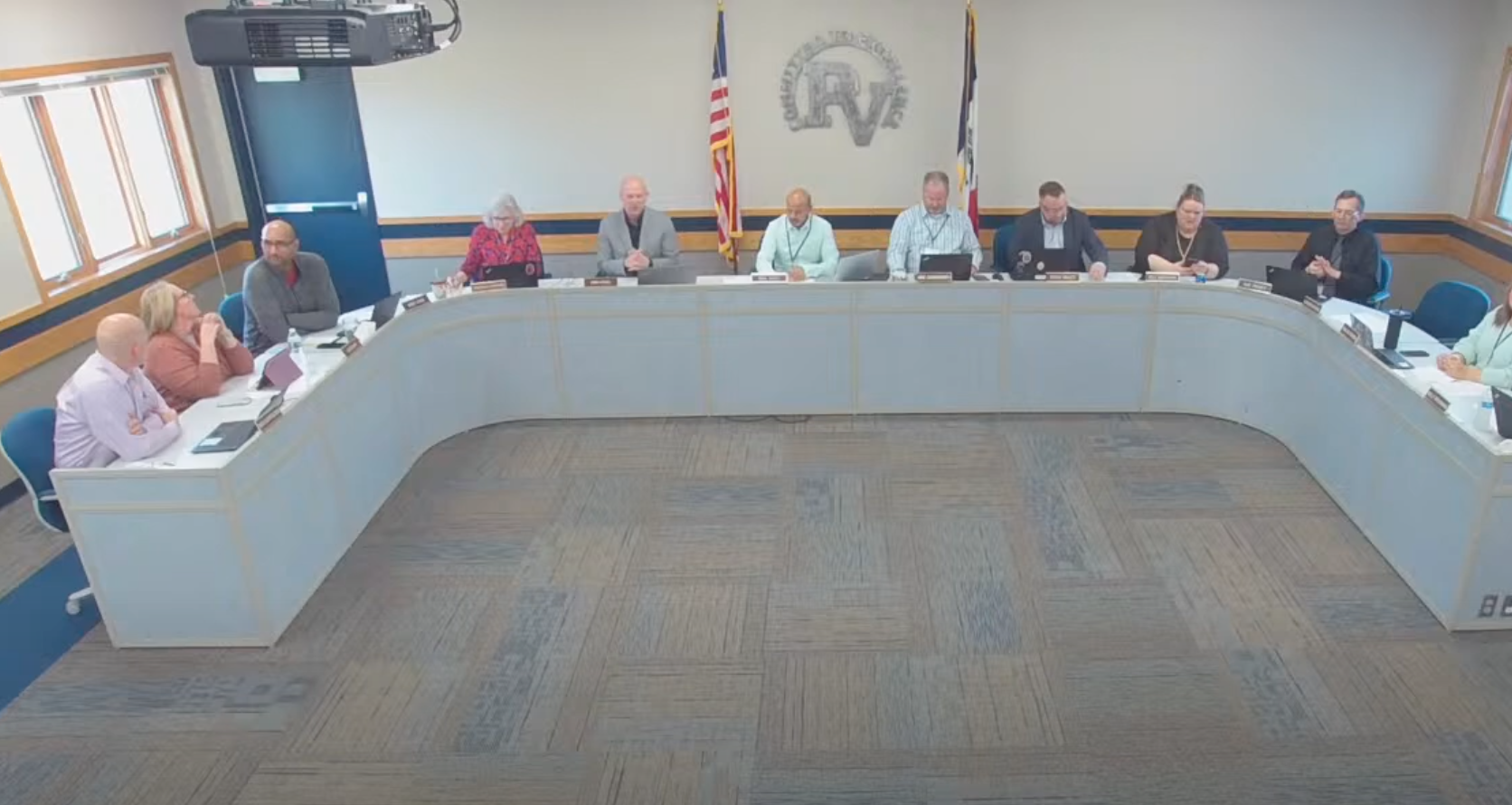
There are approximately 5,700 students enrolled in the Pleasant Valley district, all under the authority of the PV School Board. For years, this group has flown under the radar, existing with little scrutiny or attention from the public.
This relative peace is coming to an end.
School board elections, to be held on Nov. 7, are shaking up the district, with the potential to have major impacts on school policy.
PV’s board has four positions open from districts three through six. Peter Olsen is challenging current Board President Nikhil Wagle, Danny Amaya takes on incumbent Vice President Molly Brockmann and Adrienne Wheeler faces Amy McCabe. Newcomer Jameson Smith runs unopposed due to a logistical error; current member Tracey Rivera is campaigning as a write-in candidate.
Amid the changing landscape of public education, elections like this one are more important than ever.
Wagle’s main concern is that political conflict will impact voters. “The environment of education, especially public education… has become quite polarized because it’s become so political,” he said. “I think that can potentially sometimes distract people from what the end goal is… what I don’t want is distractions to occur when it comes to public education.”
Numerous hot-button topics are at the forefront of this election, book-banning being among the most contentious.
Candidates Olsen, McCabe and Amaya are all in favor of bans.
“There’s a difference between expressing… relationships that happen between humans and gratuitous and very explicit, graphic, or hyper-sexualized [content] for the purpose of excitement,” said Olsen. He considers depictions of sexual assault to fall under this same category.
Rivera, Wagle and Wheeler are opposed to bans.
“I feel that book banning is a form of censorship,” Wagle expressed. “If there’s a book and a family does not want that book to be read by their student… we have all the policies and protocols in place so that that child doesn’t read that book… If another family feels that book is an important resource for their child and they want access to it, they should be able to have access to it.”
Curriculum content has also come under fire. Amaya particularly intends to target Social-Emotional Learning (SEL) and Critical Race Theory (CRT) in schools.
“A lot of parents are fed up with [SEL and CRT], they don’t want to deal with it, they don’t want to hear it,” Amaya explained. “It’s incumbent on a district director to hear out the voice of the parents and take action.”
Numerous board candidates also intend to address the divisive issues surrounding gender identity if elected. For Olsen, this means upholding restrictions in women’s sports. “You’re seeing across the country many cases of boys who want to put on a dress and call themselves a girl,” he said, elaborating that, “You need to have some protection for women and girls in sports.”
Wagle’s priorities lie in making sure all students receive necessary support. “When it comes to students that are struggling with their identity… I feel that marginalizing those students is not the right approach. Every child, every student is important. They are loved. They should feel supported,” he said.
Yet another point of division is the Educational Savings Act, an act that diverts state funds to private education. For Wagle, this is devastating. “Private school is taking public money now… and the estimated cost of this in four years is $850 million. [Private school] is getting that much and they don’t account for one penny,” he said.
Wheeler, Brockmann and Rivera put the importance of public school funding as one of their top priorities, too. McCabe, Smith, Olsen and Amaya have different priorities.
The educational community has been divided since the pandemic when the issue of masking first emerged as a polarizing force. Even though the relevance of this issue is no longer pertinent, the effects are still grounds for dispute among candidates, especially as politicians continue to rehash old debates.
“There are two incumbents running for re-election that voted to continue to keep masks on our kids in May 2021,” wrote State Senator Chris Cournoyer in a recent Facebook post. Cournoyer went on to endorse Amaya, McCabe, Olsen and Smith.
Many voters are as concerned about candidates’ actions and behavior as they are about the platforms on which they are running.
Olsen’s behavior at a book ban deliberation last year has come into question, but he stands by his actions: “I stood up and spoke the truth: that we put rubbish… into our libraries.” Many attendees remember his actions differently; the meeting was closed to the public after Olsen allegedly threatened the committee.
Allegations of partisanship have also spread despite school board elections being non-partisan. Amaya, McCabe, Olsen and Smith are all funded by the PV School Board PAC, a local Political Action Committee which was formed in anticipation of this election. These candidates have also been publicly supported by Scott County Republican Women.
McCabe rejects assumptions that she is affiliated with a political party. “I would love for nothing more than to keep the politics out of the schools,” she said.
This statement was echoed by Amaya. “This is a nonpartisan race, we need to keep it that way,” he shared.
Olsen is proudly conservative and believes this affiliation will benefit the school board by providing diversity of viewpoint.
Even the methods some candidates are using to promote themselves is a point of contention. At Riverdale Heights Elementary School’s Trunk or Treat event, candidates gave out cups with the names of Amaya, McCabe, Olsen and Smith on them.
Superintendent Brian Strusz is hopeful that, above all, the new school board will be collaborative. “A school board is like a team. It only works as good as everyone working together understanding the common vision and goal.”
As tensions continue to rise, PV families have a grave task before them. Voter turnout at local elections is historically low, meaning every single vote carries significant weight. The district map can be found here, and voters can exercise their important duty on Nov. 7.
“I think what’s most important is making sure that everybody does their homework on each of the candidates and votes for the person whose views align with them,” Wagle concluded. “Vote for the candidates that they feel are going to bring to the school board an added perspective, a collaborative perspective, and a nonpartisan view.”
Jameson Smith declined to be interviewed for this piece.
Peter Olsen requested that the full recording of his interview be made available. It can be found in full here.
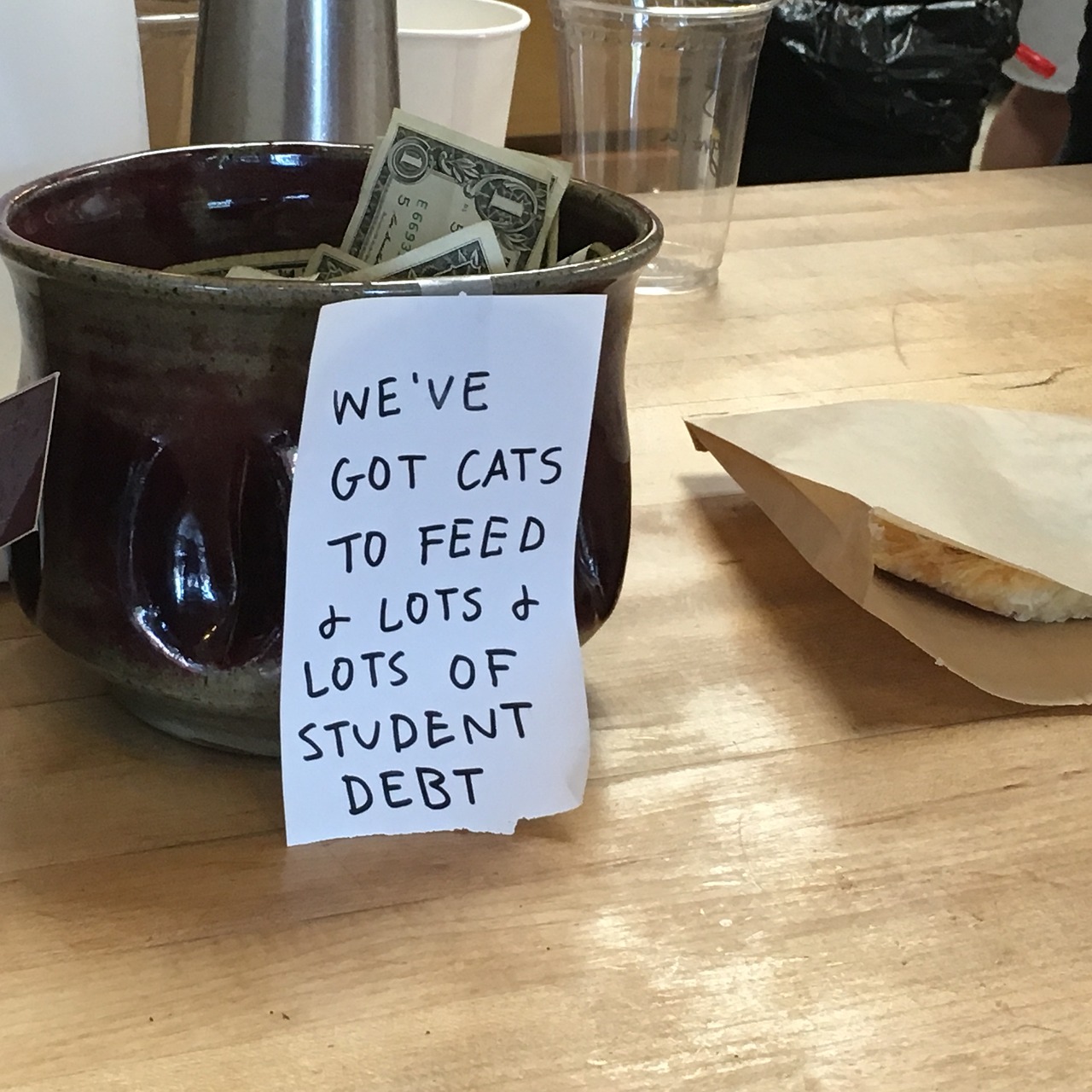
The admission scheme: The cause and effect of ingenuous college applications
Everyone wants to be the best.
In education, it is simple to define the best. Various forms of merit exist in the education world to distinguish a good student from an excellent student, such as advanced courses and extracurriculars, all in the hopes to attend a prestigious Ivy League university.
And then what?
A graduate may walk across the stage, receive a degree certificate, and may even get to keep their cap and gown. But it is undeniable that the most impactful thing one takes away from their time at school is debt.
The costs and benefits of attending college are not the same for everyone, and wealth disparity may be the clue as to why the education system is not equally rewarding. Striving for excellence in the academic world seems to be a clear cut path, beckoning many to want to follow it. But is a degree worth all it has cracked up to be?
First, students must get accepted into college. Statistics reported by The Atlantic have shown that in the past 2 years, the number of college applicants has increased by 20%. Each year, the number of applicants grows and admissions rates decrease, fostering fierce competition in high schools.
Students pine and stress for four years to take the most difficult courses and obtain leadership positions in their school. But due to the increasingly competitive nature of college admissions, students are compelled to do more, such as start non-profit organizations, businesses, create clubs, get internships, and do any other extracurricular that is worth merit on applications.
But as much as an applicant attempts to display passion, tenacity, and exigence through their extracurriculars, perhaps their true intentions are just the opposite.
This overly competitive nature fostered by college admissions creates students whose main goals are to get accepted to a college, even if this entails doing extracurricular activities that they are not passionate about, do not keep up with, or are completely falsified just to buff up an application.
Students from wealthier backgrounds often have an advantage in this business. Having more familial connections can help with obtaining unique opportunities, and the ability to go to a private school also helps one’s chances of going to an elite university. Underprivileged students are rarely offered the same opportunities, and without the economic resources to go above and beyond with extracurriculars, a deficit is apparent within the educational opportunities of students based on their financial positions.
This means the students who end up at elite universities are often legacy admissions or wealthy students who simply had more resources to succeed. And now with the overturning of affirmative action, underprivileged students will no longer be equally represented at elite universities.
Junior Becca Hahm attested to the unfairness surrounding college admissions in regards to wealth disparity. “After affirmative action was done away with, I feel like less and less deserving people are going to be admitted into elite universities.” She continued, “Underprivileged students with real talent will be overlooked in favor of students who just had more opportunities than them.”
Jonathan R. Cole of The Atlantic succinctly describes the kind of student that is produced as a byproduct of this excessive competitiveness: “The current system for gaining entry to elite colleges discourages unique passions and deems many talented students ineligible.”
Disparity in the university pathway: Is a college degree worth it for everyone?
Say a student is granted admission into an elite university, or any university for that matter. They will spend years working to obtain a Master’s degree in a given subject, or even a more prestigious degree if they attend graduate school. But do degrees truly pay off in the end?
It is a cost-benefit analysis of whether college is worthwhile. On one hand, according to The Harvard Business Review, statistics show that companies are in need of workers more than people are in need of jobs, so many employers are doing away with degree requirements.
The cruel irony is the debate over the necessity of a college degree directly goes back to wealth disparity. An article by the Washington Post describes at length how a college degree is most beneficial to those who likely cannot afford it. Those in poverty have the most to gain from a college education, as they can attain a higher-paying job by having trustworthy credentials such as a degree.
However, the typical American to have attended college will find themself in upwards of $83,000 of debt. PhD students, on average, have approximately $125,000 of debt. A person who comes from a background of poverty could be crippled by such debts, demonstrating how wealth disparity can be directly translated to education disparity in the United States.
Iowa State University graduate Dustin Miller emphasizes the impact that getting a degree had on his life, as well as the costs: “I didn’t have the same opportunities as a lot of people in high school, and I had to put myself through college,” he stated. “Having a degree has been really beneficial to me, but I understand now how college debt can be absolutely crippling if you aren’t careful.”
It remains in question whether the education system is the “great equalizer of the conditions of men,” as it was intended to be by the pioneer of public education, Horace Mann. What was intended to be a system beneficial to all, despite their economic position, has evolved into a scheme of how to maximize merit over education. The effects of wealth disparity are evidently prominent in high school and college, demonstrating how inequality is persistent in a system meant to be the opposite.

Lack of funding in Iowa’s secondary schools fuels educational inequity
As secondary education continues to be a topic of concern among Iowa legislators, elementary and middle school students are facing changing learning environments. Public school districts are highly dependent on state and local funding, and a lack of funding can negatively affect students in the long run.
School districts’ funding across Iowa is dependent on the surrounding tax bases. As a result, elementary and middle schools nestled in wealthier neighborhoods are able to offer more programs such as robotics, music, sports, recreational activities and field trips, granting students a more holistic education.
Junior Becca Hahm, who attended #5 ranked Hopewell Elementary and #52 ranked Pleasant Valley Junior High, reflected on her elementary and junior high school experiences and how they helped her determine her goals. “Having access to extracurricular programs in elementary school and middle school allowed me to explore multiple career avenues while also getting an interdisciplinary education by participating in the performing arts and athletics,” she shared.
Wealth disparity runs deeper than just extracurricular activities and programs. Students from families in the top fifth percentile of financial status are twice as likely to receive gifted and talented services than equally achieving students in the bottom fifth.
With access to more opportunities for extracurricular involvement, gifted education and areas to express their educational aptitude, elementary and middle school students that attend schools in wealthier areas are significantly ahead of their peers when starting high school.
Freshman Jack Belby, who attended #414 ranked McKinley Elementary and #204 ranked Sudlow Intermediate before enrolling at PVHS, discussed how educational inequity at the elementary and middle school level can affect a student’s education. “A lack of gifted and talented programs in elementary and middle school makes it more difficult for high-achieving students to get ahead early. To some degree, it hurts them down the line when they get to high school and start looking at college,” Belby explained.
Many high school classes and extracurriculars build on foundational skills developed in elementary and middle school, and a well-rounded early education can prove to be crucial to success in high school. As wealth disparity continues to seep into secondary education, it’s more important than ever to fight to provide the best education possible to America’s youth in order to prepare students for the future.
The middle class pays for America’s college education
As per American television, the stereotypical American middle child is often neglected, insignificant, and left with little guidance. This November, many middle-class Iowa seniors may feel the same way as they are tasked with deciding where they want to chase higher education.
In Iowa, many seniors looking to earn a bachelor’s degree will attend one of the three in-state schools: University of Iowa, Iowa State University or the University of Northern Iowa. But the options are limiting.
None of Iowa’s in-state universities rank within the top 90 universities in the United States, so students looking for a more distinguished school must venture out-of-state. Iowa State University, renowned for their engineering program, was ranked 115th in the nation and University of Iowa was ranked at 93.
Senior Shivesh Ganesh feels that the pressure of having to choose in-state vs out-of-state placed on seniors has greater implications. “I think that the state of Iowa’s main priority is to get their students to go to college which is why the in-state universities are less expensive and easier to get into. Although this provides an easier path to college for in-state students, high-achieving students usually choose to go to a better out-of-state university,” he said. Ganesh sees this as an economic loss for the state. “This causes a brain drain effect in Iowa.”
Iowa has a limited number of high-achieving students and many of them decide to forgo in-state universities and venture out-of-state, leaving the in-state universities with no room for growth.
“It’s almost like there’s a lack of talent at Iowa’s in-state universities which leaves them behind in rankings compared to other schools,” Ganesh added.
With a subpar in-state education on one end and an expensive out-of-state education on the other, Iowa seniors are faced with a dilemma on where to continue their education.
Counselor Ellie Curtis believes college education can make an impact on students’ career aspirations. “Lets say your goal is to work at Google, or those lofty goals that are possible but it takes a different strategy and that might involve looking for an institution with higher prestige,” she shared.
But this issue only seems to affect the lower and middle classes. Seniors that come from wealthier families have an upper hand when it comes to college admissions.
Harvard-based research group Opportunity Insights conducted a study on inequality in higher education. They reported that children from families in the top 1% of Americans ($611,000+) are twice as likely to attend an Ivy Plus college, a term they used to refer to Ivy League schools and other elite institutions including Stanford, MIT and Duke.
With the nation’s top institutions bolstering single digit acceptance rates, the competition for admission is cutthroat. In turn, students from wealthier financial backgrounds often have access to developed extracurriculars, university connections, or legacy statuses which increase their chance of admission.
Additionally, applicants from wealthy backgrounds can actually afford to attend Ivy Plus universities. Stanford, for example, has a total out-of-state cost of attendance that reaches as high as $82,162, a number that seems out of reach for many lower and middle-class American families.
In fact, the average two-parent, two-child middle-class family brought in a median $80,600 annually according to a study conducted by the University of Wisconsin-Madison. With the cost of attendance at top universities reaching higher than the median household income, paying for higher education seems near impossible for high-achieving middle-class students that live in states like Iowa.
In an attempt to reduce income inequality, top universities are also being pressured to accept low-income applicants over middle-income applicants. This tendency in college admissions favors low-income students who have faced more financial adversity because universities want to diversify their campuses, which do not have space for the average middle income student.
Not being able to go head-to-head with high-income students with developed applications or with low-income students that offer income diversity to a university’s campus, middle income students seem to be at a disadvantage in college admissions.
But that’s just the story of private Ivy-League universities. What about out-of-state public universities?
It’s the same story.
Next fall, Iowan students will have to pay $54,046 to attend the University of Illinois at Urbana-Champaign and $76,294 to attend the University of Michigan at Ann Arbor, two top ranked midwestern public universities.
Middle-class students who beat the odds and receive admittance to top universities usually get little to no institutional aid, a direct result of the universities’ financial aid funds being used to assist low income students. Many middle income students also have a high “expected family contribution,” which works against them in the FAFSA application process, leaving them to pay the cost of attendance completely out of pocket.
For many middle-income students, including the students who Curtis works with on a daily basis, the financial aid process seems unjust. “What I find in my experience to be the most difficult for the middle-income students is that they might look like they make too much on paper which means they won’t qualify for as much financial aid from the government, but on the other hand when folks are middle income that makes it extremely difficult to save for college.” she explained.
“I would say in this day and age we’re just kind of put into a corner.” Curtis shared.
From application to matriculation, middle-class students lack affordable options when it comes to where they plan to enroll next fall. With the odds stacked against them in both the college admissions and financial aid processes, middle-class seniors face multiple barriers when it comes to their college education as universities continue to disregard their financial needs.
It seems as though middle-class Iowa seniors are, in fact America’s stereotypical middle child, always forgotten about and forced to assimilate to unjust circumstances.
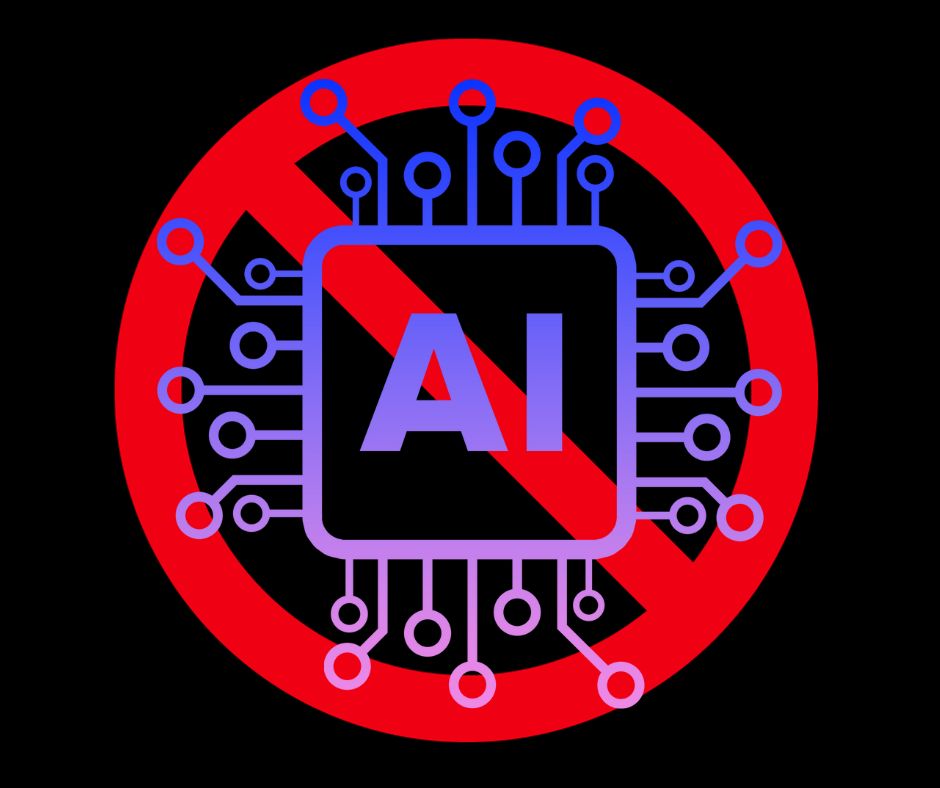
Artificial intelligence (AI), an integral part of numerous industries, is automating the world.
Recently, AI has been driving into the field of education; for example, Khan Academy released their AI learning assistant Khanmigo, and Duolingo released an AI tutor as part of their premium subscription. According to reviews, these AI tutors have been moderately successful, receiving an eight out of 10 holistic rating, in teaching students concepts.
Both Khanmigo and the AI tutor from Duolingo are powered by OpenAI’s GPT-4. OpenAI is currently working on its upcoming GPT-5 and has recently released a guide for teachers to integrate AI into the classroom.
Will teachers accept the implementation of AI into classrooms? Do students want AI to be another resource they can use for help?
Sophomore Vrayas Pila looked at AI in education from two different perspectives. “Most teachers think that AI is a threat to learning. I believe it can be, but it also depends on how the student uses it,” Pila shared. “I believe that the right way to use AI is by asking it to explain something, understanding its response, and double-checking that response with google. If a student is being asked to apply a concept and copies his answer from ChatGPT, that is not learning, that is cheating.”
Jason Landa, PV teacher in the Math and Computer Science department, contrasted Pila’s opinions. “AI doesn’t help a student get better because they are not challenging themselves,” Landa stated.
Landa argued students using AI are not challenging themselves because they are letting the AI do the thinking for them, and ultimately not growing as a student.
Landa also remarked that AI at its current state is not developed enough to beat a human. “AI gives very cumbersome answers,” Landa expressed. “It is nowhere near replacing a person yet.”
The quality of the answers generated by AI are vague. These answers are not up to par with the expectations educators have of their students. Landa noted a professor who conducted an experiment to see if the students or the AI developed a better project. This experiment resulted in the students doing exceptionally better than the AI. This exemplifies how the human mind is more creative and nuanced than the AI’s that are currently available.
At its current state, AI has many pros and cons. As AI is evolving at a rapid pace, the possibility of AI being beneficial in the field of education is not too far away. Maybe, AI can be a resource to students while also making sure they are accountable of thinking of the concepts themselves.
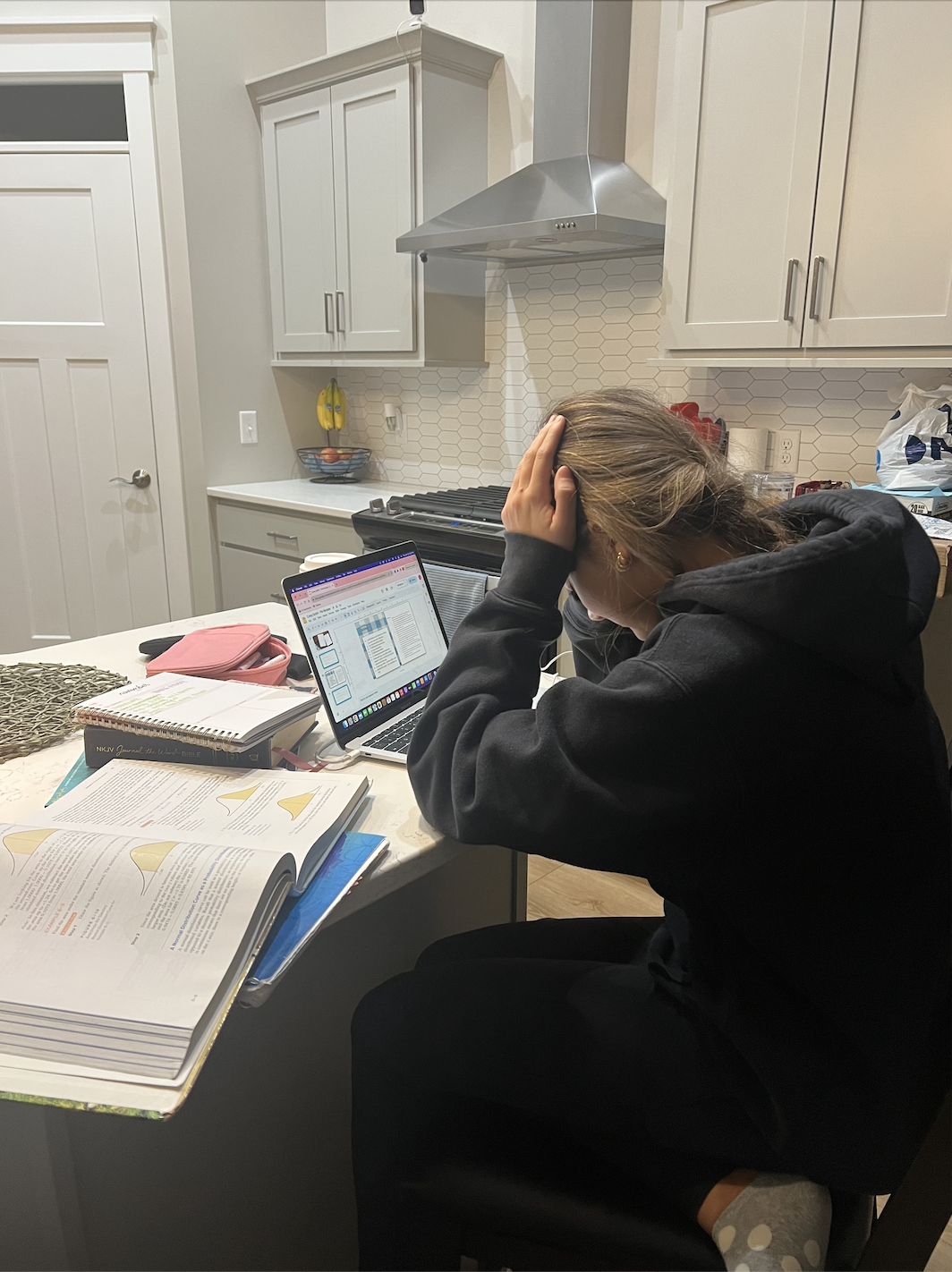
Society has created an overbearing pressure which persuades students to believe that their worthiness directly correlates with the letters on their transcripts.
The original objective of the grading system was to motivate students and show an accurate representation of their learning. But with the upsurge of pressure and competitiveness amongst students, grades have become an instigator for the fear of failure.
With GPAs ascending and college acceptance rates plunging, academics have entered an entirely new ballpark. Students are competing daily for better academic rankings than their peers as colleges and academic titles are highly dependent on grade point averages.
There is much more complexity to a student than their one-dimensional grades, but students know if their grades do not reflect their work ethic, colleges will not be interested.“I feel so much pressure to keep my grades up because I know colleges are looking for a high grade point,” said senior Abby Moroney. “I feel like you have to juggle so much to impress colleges which leaves so little time to focus on your grades. It just doesn’t feel possible.”
This causes immense pressure on students, so much so that they begin to believe that their grades correspond with how intelligent they are.
Many students are given false hope that if they do well in school, their ACT or SAT scores will reciprocate. In spite of this, just the opposite is occurring: nationwide scores are decreasing while grades are still improving. “School grades can be very misleading because someone could do well in one subject at school, but not do well on that same subject on the ACT because it’s just so different. That can really take a toll on your confidence,” stated senior Gracie Collins.
This mindset can cause self esteem issues on both extremes of the spectrum.
Academic validation entails that when students get good grades, they hold themselves in high regard, thinking they are naturally gifted and thus creating destructive egocentrism. In contrast, when a student does poorly in school, they associate themselves with failure.
These extensive ego issues can follow students into other areas of their life, making this more than just a school issue.
Many high achieving students experience burnout at some point in their educational or professional careers because of the exhausting cycle of seeking validation and eventually disappointing themselves when they don’t meet their own expectations.
Learning should be an inspiring and enjoyable experience, but society no longer appreciates the concept. “When thinking about college, everyone just wants to have good grades on their transcripts, so they just memorize things for tests to see that good grade, then forget all that information after,” senior Luci Patel remarked.
The letter grading system conditions students to feel like failures when the outcome of a test or assignment is not what they’re looking for, but the grade does not reflect countless hours put into studying, progress or effort; it reflects defeat.
Talents and weaknesses vary amongst students, but all are pressured into the same validation-seeking performance. Considerable damage could already be done and further is bound to happen if societal standards cannot adapt to student’s emotional needs. Accepting and normalizing failure followed by effort would bring millions of students peace of mind and could potentially remedy the outbreak of academic validation.

With 68% of teachers holding master’s degrees, Pleasant Valley’s teachers are well educated in their fields. However, a teacher’s training never ends, and PV’s training this year has garnered many complaints.
At the beginning of the year, PVHS teachers chose one of five books to read as part of their required professional development for the first semester. All of the options cover the topic of using different grading methods, and teachers gather each month to discuss what they have read.
“I don’t think that it’s bad for us to all be exposed to new kinds of thinking; I think it’s good for everyone to be learners for life. In those ways, I think it’s perfectly fine and acceptable to ask us to read the book,” commented math teacher Shelli Paustian.
While continued learning is beneficial for teachers, many teachers are in disagreement with the books’ suggestions or implications. Extending late work policies, giving partial credit for missing or plagiarized work and moving toward a standards-based grading system are all common themes in the books.
While standards-based grading is designed to make school more focused on learning rather than achieving a good grade, many teachers believe this type of grading would take away the incentive for students to participate in class and complete their work.
English teacher Lynne Lundberg used to implement a standards-based grading system at a previous school. “I had to completely change the way I ran the classroom; it almost became a contract grading situation. It was hard to hold a class discussion when everybody knew that they could get around to the reading next week,” explained Lundberg.
Not only do these books teach controversial grading topics, but some teachers are also skeptical of the writings’ relevance. .
Paustian pointed out that “Grading Smarter Not Harder” by Myron Dueck, the book many math teachers are reading, was written over 10 years ago by an author who only taught history. This creates issues because today’s education is more technological compared to methods 10 years ago. Since the time the book was published, classrooms have changed dramatically and many argue that different subjects require different policies.
For example, math classes continually build off of previous topics, making extended late work policies much harder to implement than they may be in a history class that can jump to new topics without relying on previous knowledge. Other subjects, like English courses, require students to complete drafts of their work, which teachers believe to be a crucial step in the learning process.
“Writing is more about the process than the product. If students do not participate in the process, they are missing out on the intended learning,” journalism teacher Maureen Dyer said.
Dyer believes removing academic penalties from late work will inadvertently remove a student’s motivation to complete that work on time. “It’s not just about the content itself. Educators are teaching students the soft skills needed to be successful adults and employees. Some of the more modern pedagogical ideas these books bring up do not take the importance of those soft skills into account,” she said.
Dyer isn’t the only teacher who feels this way, nor are late work policies the only controversial focus in the assigned books. Standards-based grading may make classrooms harder to manage because the late work policies have the potential to create loads of late submissions for teachers to grade at the end of a semester.
One of the books some teachers are required to read, “Grading for Equity,” by Joe Feldman, suggests that teachers shouldn’t give zeros or any penalty for late work. “When we don’t penalize for late work, we send the message that learning has a more flexible timeline and pace, and it’s better to produce high-quality work submitted after the deadline than to cut learning short,” wrote Feldman.
Teachers are skeptical about these strategies, and these practices could cause much more work for staff.
“Teachers are expected to do more and more with less and less backup in a lot of ways,” expressed Lundberg. “If this book’s practices that I’ve read about so far are put into practice, it means a lot of extra work for me.”
Luckily for those who fear the negative implications of such practices, they aren’t being mandated any time soon.
Barb Pischke, a PV math teacher, sees the benefits of such books being studied. “We should give everybody a chance to read, to discuss and just take a step back to think about some new things,” she explained.
Some faculty believe these books give teachers a chance to explore new policies and strategies. But others are left hoping the policies they feel so strongly about will not become future mandates and yet another point of contention in the life of a modern educator.
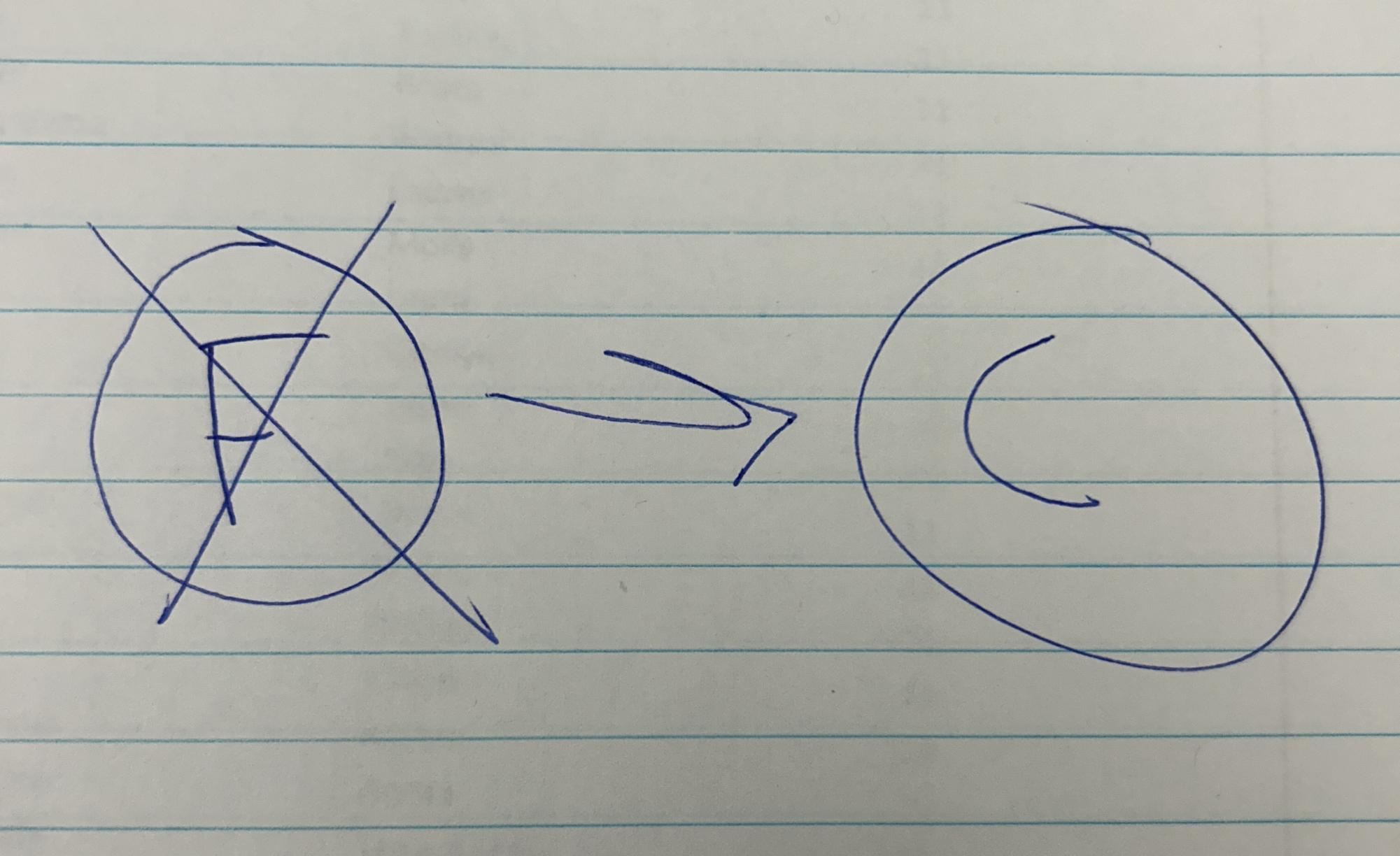
On October 19th, at Pleasant Valley High School, parents of Geometry students received an email stating any students that score below a 70% on assessments will be assigned to an academic study hall. The email is in response to students failing to complete homework assignments.
The Geometry situation at PV is not an isolated incident, but rather an example of a national struggle: students are not allowed to fail.
Grade point averages nationwide continue to increase while ACT scores decrease. How can students be getting higher grades but doing worse on standardized tests?
One major reason for this difference is the lack of motivation for students. The ACT is currently not required at many universities. And in the classroom, students often ignore homework that isn’t graded. Math teacher Shelli Paustian has witnessed this trend in her own classes, “In general, kids don’t want to do homework. They don’t want to practice anything. They don’t want to try to get better just to get better.”
Teachers have tried their best to motivate students to complete their coursework, and the academic study hall for Geometry is only the most recent installment.
Nicholas Sacco, a math teacher at Pleasant Valley, explained how reassessment policies have been put in place to help students. “For Algebra 2 we put together a retake policy. We worked really hard to find a reassessment policy that would be fair for students but also wouldn’t let them take advantage of not giving their best effort and making up for it by retaking the test,” he said.
While reassessment policies are meant to help students increase their grade, they also provide opportunities for students to put even less effort into their learning while still reaping the benefits. Despite that, students still manage to avoid failing grades due to a stigmatization of letting students experience failure.
“I don’t want kids to fail, but I also can’t make them do things that they don’t want to do,” said Paustain.
Teachers are currently working in an environment where students want to do anything but learn while administrators want to see the district achieving high grades and scores on standardized tests like the ACT and Iowa State Assessment of Student Progress (ISASP).
“It’s obvious that students want to give their attention to the cell phone more than they want to with their learning. I think that there is a time and place to be able to use the technology, but probably their biggest struggle is being able to determine when that time is,” said Sacco.
Paustian has also seen the change in student prioritization to things other than their schoolwork. “Many students have trouble thinking past five minutes from now. Sometimes they don’t realize the repercussions of not doing something today and how that could affect [them] tomorrow,” she said. Students don’t realize that if they don’t put effort into their classes that they are going to have a hard time succeeding in this.
While avoiding a failing grade may be considered success for some students, receiving a D- instead of an F will not help them in the real world. “Is success passing the class or is success two years from now [the students] are productive members of society? I think that we have less failures today, but I don’t know if we have more successful adults today,” said Paustian.
Paustian has first hand experience on the shortcomings that current students are experiencing in the workforce.
At the end of the day, teachers still believe in their students and hope students will work with them to succeed in both education and life. “I think students still want to do well,” said Sacco. “I know that I’m going to do everything I can to help students succeed, but every student has to meet me somewhere. It can’t be entirely on me to do everything for them, but I’m going to do everything in my power to help them be successful.”
Your donation will support the student journalists of Pleasant Valley High School in Bettendorf, Iowa. Your contribution will allow us to purchase needed equipment and cover our annual website hosting costs.










